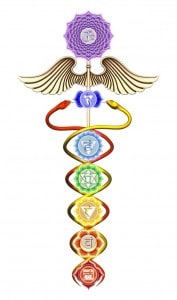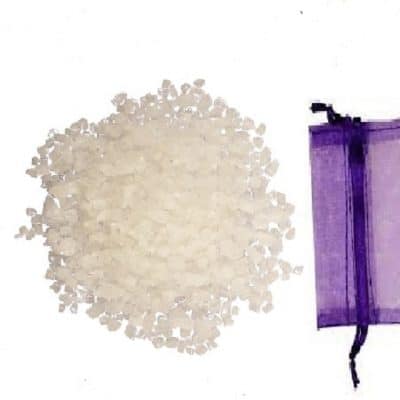Allergies
See also acupuncture, asthma, dermatitis, eczema, psoriasis, sinusitis
Why people develop allergies remains a mystery in the medical community. Until we know more about allergies, the best line of defense is to eliminate the offending agents. Sneezing, runny nose, watery eyes, sinus congestion, hives, swelling are all symptoms of allergies.
Allergies can affect almost any area of the body. Substances that irritate the skin, allergic reactions to drugs, detergents, and other chemicals are all culprits. Also, grass, cow products, house dust, pets, wheat, colorants, additives and preservatives are all possibilities.
Any skin inflammation may be considered Dermatitis. Redness, scaling, and thickening of the skin may occur with dermatitis. Pinpointing the cause of the problem is the first step toward alleviating the symptoms.
Eczema is a type of dermatitis that is allergy related. It appears as dry, cracking, crusting and red patches on the skin. Often there are swelling, weeping blisters. The skin can become inflamed and itchy. Many factors can contribute to eczema. Stress is a major factor. Exposure to cleaning compounds, perfumes, detergents, household chemicals, soaps, food allergies, as well as, nutrient deficiencies.
Anaphylactic shock. This is the most serious of allergic reactions. It can kill by suffocation, the result of swelling of the larynx and obstruction of the airway. Anaphylactic shock can occur in response to insect stings, ingestion of allergenic foods in sensitive individuals, and injected or swallowed doses of medication. It is a medical emergency, but it can be treated effectively. An injection of adrenalin (administered under medical supervision) will usually end the reaction promptly.
It is known that white blood cells (also known as lymphocytes) are a fundamental component of the immune system that protects our bodies from invaders. When they make a mistake, an allergic response can occur. When a lymphocyte encounters a particle or cell and identifies it as a foreign invader, it produces antibodies specifically engineered to fight that particular threat. There are five basic types of antibodies, called immunoglobulins, or Igs. Each is classified by type with a letter suffix: IgA, IgD, IgE, IgG and IgM. The Ig known to be responsible for most allergic reactions to food is IgE, although IgG is also commonly mentioned.
IgE allergies occur when the immune system, in an effort to reject a certain food or other substance, creates an antibody to that food, immunoglobulin E. In other words, the blood cells of an allergic person are “misinformed’ at the genetic level and cause the production of large quantities of IgE antibodies. The antibody becomes attached on one side to the food/substance molecule and on the other side to a mast cell (mast cells are a type of cell containing histamine and other allergy mediators instrumental in the allergic response). When this happens, histamines and other chemicals are released from the mast cells, causing such immediate responses as runny nose, itchy eyes, skin rashes and indigestion. IgE can cause anaphylaxis, an extreme, sometimes even life-threatening response in which the airways swell, sometimes to the point where the person cannot breathe.
The most common tests for food allergies are IgE skin tests, where the skin is scratched or pricked and allergens such as wheat, eggs and milk are applied. Within 15 to 30 minutes, local reaction may occur. Other types of tests include blood tests and patch skin tests. However, there are reports that blood testing for food allergies provides more reliable results than skin testing. The latter are problematic because of their tendency to yield false positives. This means that people may show a positive result but are still able to eat a certain food. To summarize this difficult and confusing field, it appears that the efficacy of all allergy testing is under suspicion.
Allergies vs. Sinusitis
Allergies
~ Inflammation in the nose
~ Caused by indoor and outdoor allergens
~ Symptoms can include sneezing, runny nose, nasal congestion, and itchy, watery eyes
Sinusitis
~ Inflammation of the sinuses (located in the forehead, cheekbones, and behind the nose)
~ Caused by sinus infection (usually from a virus or bacteria). But can also be caused by nasal polyps or a deviated
nasal septum.
~ Symptoms can include thick yellowy mucus, sinus pressure (tenderness and swelling around the eyes, cheeks, nose and forehead), and reduces sense of smell and taste.
Managing Your Allergies
Prevention is the key!
Tree and Plant Pollen are one of the biggest culprits. When you come in from the outdoors, take off your clothes and through them in the washer. Take a shower, wash your hair and change your clothes. We trek pollen into the house from the outdoors and this is one of the biggest, yet unseen problems with people who suffer from allergies.
Antihistamines interfere with brain activity, causing drowsiness and depression. Never use antihistamines if you have a tendency to depression or mental dullness. Even when these drugs do not depress mental activity, they merely suppress allergy rather than cure it. As a result the pattern of immune over responsiveness is strengthened rather than weakened, meaning that more treatment will be required in the future.
This is even more so with steroid drugs (cortisone and related compounds). Never use cortisone, prednisone, or other steroid drugs to treat allergic reactions unless they are very severe or life-threatening. If you must take these powerful hormones, limit your use of them to two weeks. Steroids perpetuate allergy through their suppressive action. They also lower immunity.
Air-conditioning your house is probably the single most important thing you can do to alleviate pollen problems, and it can help with two other chief inhalants molds and dust mites.
Vitamin C has antihistamine activity. Vitamin C supplementation has been reported to help people with hay fever in preliminary research. Consider 3,000 – 6,000 mg of Vitamin C in divided doses, per day.
Bioflavonoids such as Quercetin, might act synergistically with Vitamin C as both have antihistaminic activity. Although some doctors of natural medicine advise people with hay fever to take 400 mg of Quercetin two to three times per day, only limited preliminary clinical research has yet suggested that Quercetin benefits people with this condition.
Proteins in food can cross-react with pollen we bring in from the outdoors. Wash all fruits and vegetables before eating them, and don’t forget to wash yourself if you just came in from the outside when picking these fruits and vegetables.
Allergy Antagonists
Dust Mites. The dust mite is an almost-microscopic relative of ticks and spiders. But the living mite is not the problem. It’s the fecal material they expel in their wanderings about our carpets and furniture, their primary residences and the bodies of dead mites that cause reactions.
Hay fever is an allergic condition triggered by inhalant substances (frequently pollens), which leads to sneezing and inflammation of the nose and conjunctiva of the eyes.
Hives are lumps or weals that are very itchy. They can appear all of a sudden. They can be related to a particular food or as another complication from allergies; stress.
Mold. Mold grows wherever it’s dark and humid under your carpet, in the basement. It just doesn’t matter which one you encounter. Inhale any one of them, and if you are allergic, you’ll start sneezing.
Tree and Plant Pollen are one of the biggest culprits. We trek pollen into the house from the outdoors and this is one of the biggest, yet unseen problems with people who suffer from allergies.
“Andrew’s Best Remedies”
-

Aller-C
$ 29.95 -
Sale!
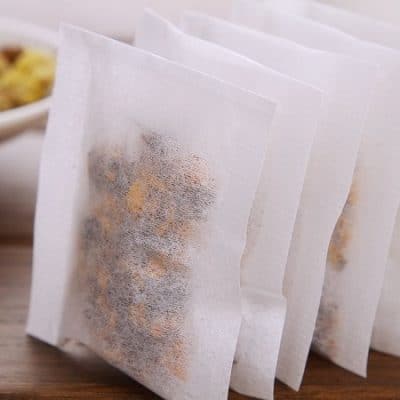
Allergy Eye Tea Bags
Original price was: $ 24.95.$ 21.95Current price is: $ 21.95. -
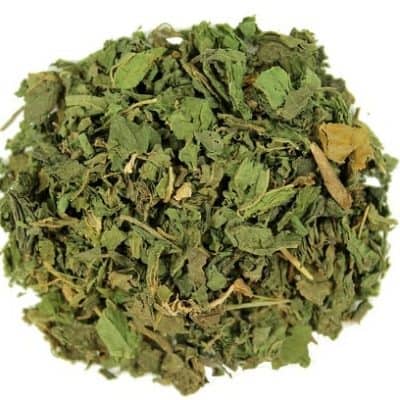
Allergy Tea
$ 8.95 -
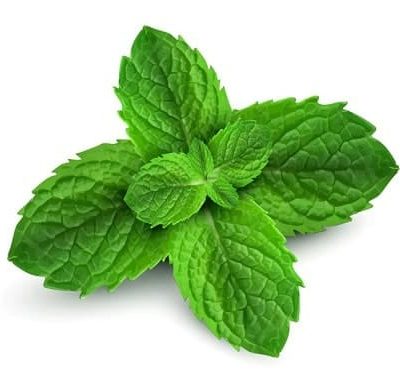
Angel’s Mist Peppermint Essential Oil
$ 9.00 -
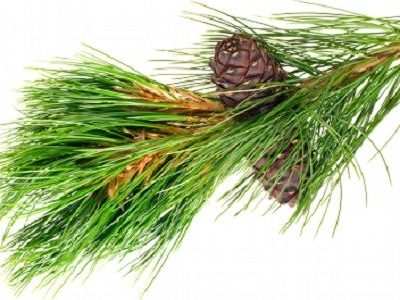
Angel’s Mist Pine Essential Oil
$ 12.00 -
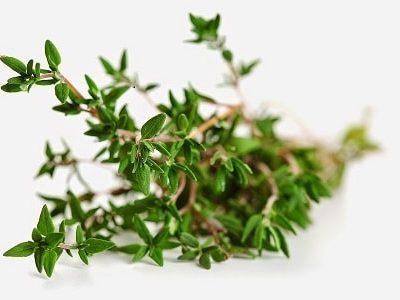
Angel’s Mist Thyme Essential Oil
$ 14.00 -
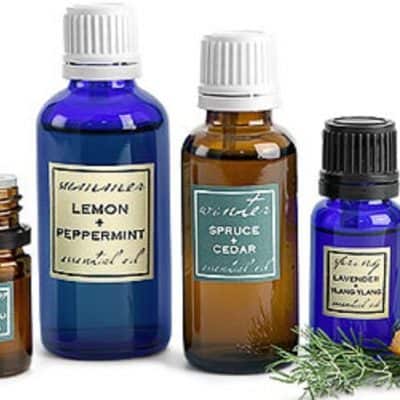
Angel’s Mist Aroma Remedy Blends
$ 19.95 -

Apple Cider Vinegar 12 oz
$ 8.95 -
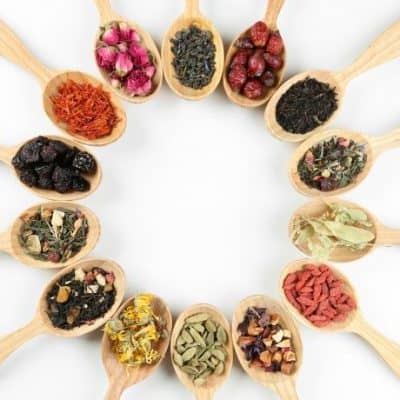
AromaThera-Teas by the Pound
$ 29.95 -

BHI Sinus Tabs
$ 19.95 -
Sale!
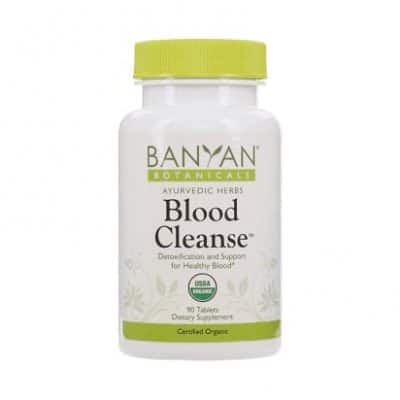
Blood Cleanse 500 mg 90 tabs
Original price was: $ 39.95.$ 37.50Current price is: $ 37.50. -
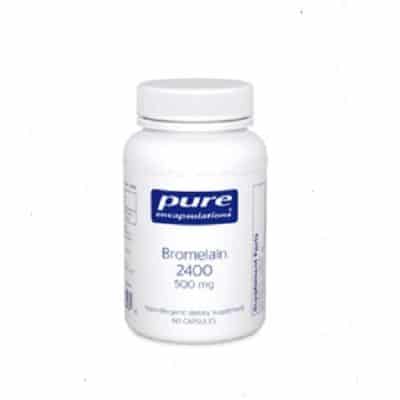
Bromelain
$ 29.95 -
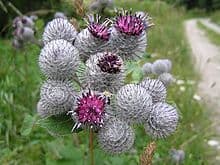
Burdock Tincture
$ 19.00 -
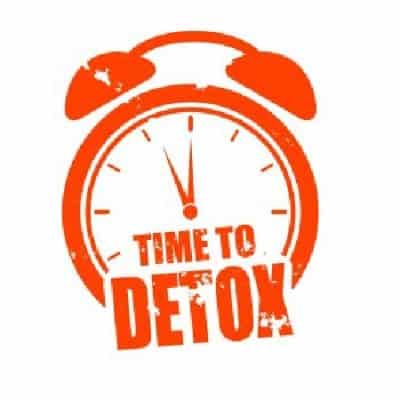
Cleanse & Detox Tincture
$ 21.95 -
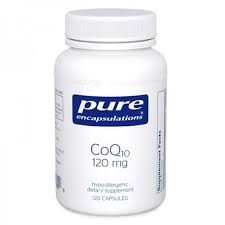
Coenzyme Q10
$ 59.95 -

Cold Calm Homeopathic Remedy
$ 26.95 -
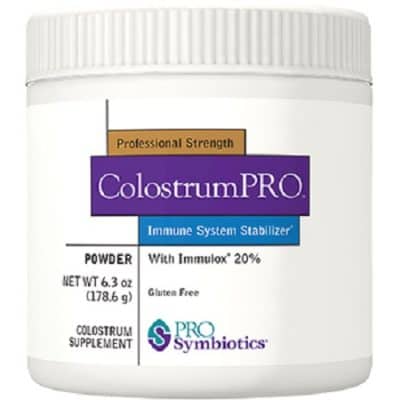
ColostrumPRO Powder
$ 64.95 -
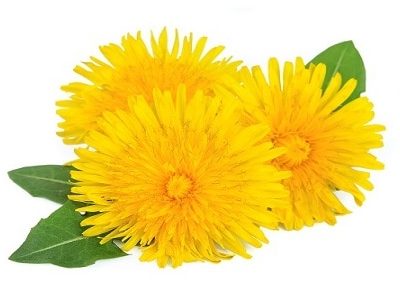
Dandelion Tincture
$ 19.00 -
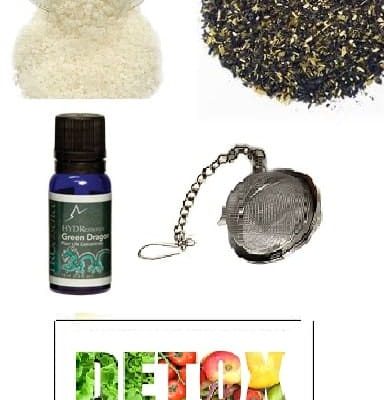
Detox Complete System
$ 49.95 -

Digestive Enzymes Ultra
$ 38.00 -

Drainage-Tone Formula
$ 38.00 -

Flaxseed Oil Gel Caps
$ 19.95 -
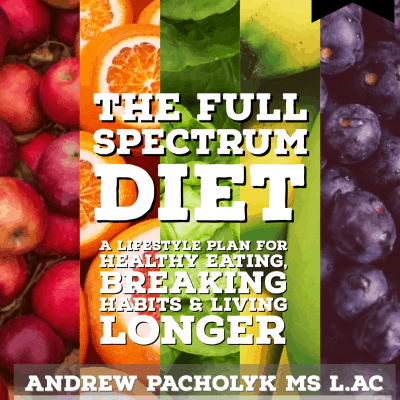
Full Spectrum Diet and Kit
$ 39.95 -

G.I Detox 60 caps
$ 31.95 -
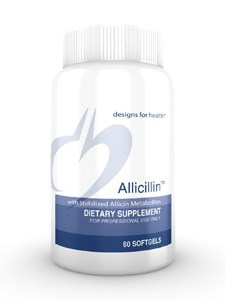
Garlic Allicillin™ 60 gels
$ 29.95 -
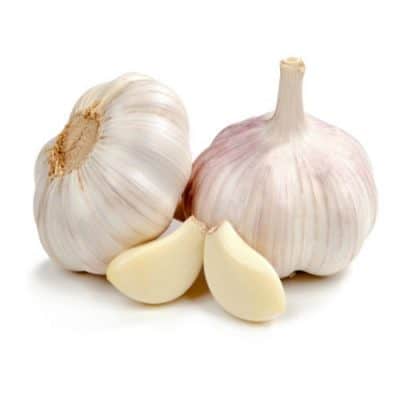
Garlic Tincture
$ 19.00 -

GI Fortify
$ 39.95
Herbal Remedies
Herbs that are beneficial for allergies (if you are not allergic to them) are Burdock Root, Dandelion, and Echinacea. These herbs help to purify the blood, boost the immune system and improves organ function. Bee Pollen can strengthen the immune system. Start with a few drops at a time and work up to a dropper 2-3 times a day. The most important of these are Goldenrod and Ragweed (Ambrosia ambrosioides). Eyebright and Elder also have a reputation for use as hay fever remedies. However, an individual allergic to one of these plants should avoid them unless under the care of a doctor of natural medicine.
Bee Pollen – has been used to build up the immune system to to fight colds and to counteract depression. Bee pollen has also been used internally to increase anti-allergenic properties to enhance the immune system against allergies to pollen.
Burdock Root – Burdock root contains high amounts of inulin and mucilage. This may explain its soothing effects on the gastrointestinal tract. Bitter constituents in the root may also explain the traditional use of burdock to improve digestion. It also contains polyacetylenes that have been shown to have antimicrobial activity.
Coenzyme Q10 improves oxygenation and immunity. 30 mgs, twice daily. In traditional medicine, some herbs whose pollen can cause symptoms of hay fever have been used as a way to reduce symptoms of hay fever, which is the homeopathic theory of “like cures like”.
Dandelion – Dandelion is a natural diuretic that increases urine production by promoting the excretion of salts and water from the kidney. Dandelion may be used for a wide range of conditions requiring mild diuretic treatment such as poor digestion, liver disorders, and high blood pressure.
Echinacea – Echinacea is another herb useful for the relief of allergy symptoms. With a rich history of use in Native American traditions, echinacea possesses natural anti-inflammatory properties. Echinacea also helps relieve the symptoms of upper respiratory tract infections and is useful for sore throats and even acne.
Green drinks – green drinks are filled with antioxidants and other nutrients, which help to detox the body. Detoxification can calm allergy symptoms by helping to flush out toxic build up in the system. Made from spirulina, wheat and barley grasses, these drinks are one of the best allergy medicines.
Nettle Leaf – Nettle leaf can help in the reduction in symptoms of hay fever, including sneezing and itchy eyes. For help with hay fever symptoms, consider taking 450 mg of Nettle Leaf capsules or tablets two to three times per day, or a 2-4 ml tincture, three times per day. Do not take this herb if you have high blood pressure.
Horseradish – The heating qualities of horseradish are a clue to its most popular therapeutic use: clearing up nasal and chest congestion. As well as helping to clear the respiratory passages and eliminate excess mucus, this herb is effective for the relief of cough symptoms and sinusitis.
Garlic – One of the oldest recorded culinary spices, garlic (Allium sativum) is mentioned as a food in the Bible, and is known to have been part of the diet of Egyptian workers as long ago as 2600 BC. It is the dominant flavor in much of Mediterranean cuisine, but is also a more subtle addition to many Asian dishes. But alongside its popularity in food, garlic has a long history of medicinal use a traditional history that has gained increasing recognition from science. Garlic preparations have long been used to relieve the congestion of colds and hay fever.
Herbal Combinations and Formulas
Herbal tinctures are concentrated liquid extracts of the medicinal properties of herbs. Shake the tincture bottle well. As a dietary supplement, place 1 to 3 droppers full ~ approximately 1 tablespoon or 40 drops, under the tongue, or in juice or water as needed, 2-3 times a day.
Shake the tincture bottle well. As a dietary supplement, place 1 to 3 droppers under the tongue, or in juice or water as needed, 2-3 times a day.
Immunity Tincture – Astragalus, Pau D’Arco, Suma, Dandelion root, Oatstraw, Kelp.
BreathEasy Tincture – Lobelia, Pleurisy, Marshmallow, Mullien, Coltsfoot, Licorice.
Cough Calm Tincture – Horehound, Elecampane, Comphrey root, Wild Cherry Bark, Eucalyptus, Chickweed, Slippery Elm, Licorice.
Herbal Teas
In a stainless steel pot, boil desired amount of water. The moment it boils turn the heat off. Add the following herbs in an infuser, muslin bag or tea ball for a single cup or add one-three teaspoons of herbs per cup for larger amounts.
Allow the herbs to infuse for up to 5 minutes. Drink 3-4 cups a day. For flavor-add lemon and sweeten with Stevia or organic honey. These herbs are helpful for gently cleanses, purifying, detoxing, anti-inflammatory. This powerful formula will help remove accumulated toxins in the body. Strong antioxidant, cleanses the colon and stimulates circulation.
Allergy Tea– Helps clear up allergy symptoms and relieves asthma related problems. Clears congestion and helps to open sinuses. Mullen, Echinacea, Burdock, Nettle, Licorice, Fo-ti, Astragalus.
Breath of Life Tea– This tea was designed for deep congestion and tightness in the chest and upper respiratory region. Helps by reducing mucus, inflammation. Feenugreek, Slippery Elm, Wild Cherry, White Pine, Licorice, Astragalus, Ginger, Orange Peel, Oska, Pleurisy.
Cough and Cold Tea– Blended to feed and nourish the body during cold & flu season. This healing tea cleanses with antibacterial, anti-inflammatory properties. Echinacea Purpurea, Echinacea Angustiotia, Mullen, Catnip, Goldenseal Leaf, Parsely, Fo-Ti, Comfrey, Spearmint, Uta Seed.
Essiac Tea– Stimulates the immune system and purifies the blood. Helps with many skin disorders. Helps to sooth inflammed mucous membranes of the bowels, stomach, and urinary tract. Burdock Root, Sheep Sorrel, Slippery Elm Bark, Turkey Rhubarb Root.
Immune Builder Tea– When taken on a regular basis, this tea helps to build and strengthen the immune system. Astragalus, Echinacea, Hawthorne, Peppermint, Spearmint.
Stop Smoking Tea– Reduces cravings for nicotine. Helps with balance and food cravings. Clears congestion, has a mild antiseptic and reduces swelling by helping to reduce blood flow. Spearmint, Lobelia, Kudzu, St. John’s Wort, Peppermint, Marshmallow Root, Mullen, Licorice Root, Stevia, Clove, Eucalyptus, Orange Peel.
DIY Nasal Spray
To make your own saline mixture, combine about 16 ounces (1 pint) of lukewarm water (distilled, sterile, or previously boiled) with 1 teaspoon of non-iodized sea salt. You can add 1/2 teaspoon of baking soda to buffer the solution.
Put the mixture into a clean Neti pot or spray bottle. Use 3 times a day. In the morning when you wake, after you have come indoors from being outside and in the evening before bed.
Not a DIY (do it yourself-er) Try our homeopathic nasal decongestant.
Aromatherapy Remedies
Aromatherapy can help with hives, eczema, dermatitis, bee stings inflammation, and dryness. Essential oils that benefit pollen allergies by strengthening the immune system, reducing phlegm, and clearing sinuses, especially in a steam include Cedarwood, Cypress, Roman Chamomile, Lavender, Geranium, Pine, Tea Tree, Lemon, Myrrh, Ylang Ylang .
Cedarwood oil is deeply relaxing to the bronchial area, slows down rapid breathing in asthma, calms allergy reactions and helps the chest muscles relax to open the lungs for more air.
Chamomile Oil Chamomile essential oil is an analgesic, anti-anemic, antineuralgic, antiseptic, antispasmodic, bactericidal, carminative and works on the digestive tract.
Eucalyptus: fights bacterial and viral infections. This oil stimulated regeneration of lung tissue. It increases blood oxygen supplies allowing more oxygen as well as nutrients to be delivered to the cells throughout the body.
Ginger: stimulates the immune system. It warms the chill from winter and dampness, cools the body by inducing sweating, reduces the drainage of a runny nose and helps with respiratory infection.
Lavender: clears congestion, stuffiness and soothes respiratory and throat disorders and boosts the immunity.
Peppermint: clears sinuses and improves breathing.
Pine: fights respiratory infections and encourages the release of mucus. This oil relieves congestion and makes breathing easier.
Rosemary: helps relieve respiratory disorders, fights infection, expels phlegm and assists in lymph drainage.
Tea Tree: a cousin to eucalyptus, this oil relieve respiratory disorders, fights bacteria, viruses and fungi and has a reputation of improving immunity.
Thyme: improves immunity by boosting the production of white blood cells. This oil is great for respiratory disorders.
Not a DIY (do it yourselfer), try Andrew’s Aroma Remedy Blends: ~ 3 times a day, morning, noon and night, utilize these blends of essential oils:
Angel’s Mist Allergy Rub Essential Oil Remedy Blend
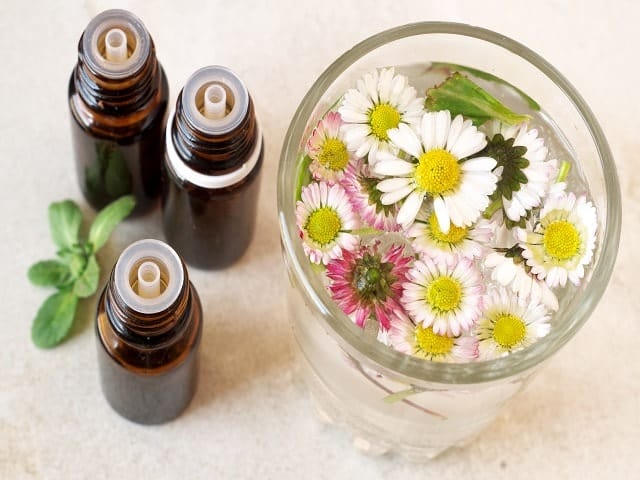
Allergy Steam Recipe
Bring 2 quarts of water to a boil. Remove from heat. Try these variations: ~ Add a handful of fresh herbs such as peppermint leaf, thyme and/or clove. ~ Blend in 5 – 10 drops of eucalyptus, peppermint, ginger or tea tree oil. Stir in ingredients and bring your face close enough to the water to feel the steam on your face. Drape a towel over your head to form a “tent”. This keeps the wonderful ingredients concentrated on your sinuses. Steam up to 5 minutes.
Addicted to OTC Nasal Sprays?
Over the counter nasal sprays clear your congestion up immediately, but leave you with long term addiction to these products. You have to break the cycle! The best way to do this is like this: the once prescription Flonase is now sold over the counter. Buy one bottle + a bottle of salt water (or make your own ~ see above). For 2 3 weeks, every morning and every evening, spray 1 shot of Flonase up each nostril, then follow with 2 shots of salt water up each nostril. You will notice it will take a few minutes for the congestion to clear, the first week you do this. By week 2 and 3, you break the total dependence on the OTC nasal sprays. After this…use salt water only!
Hydrotherapy
The mysterious and amazing healing power of water has been utilized for centuries. Water cleanses, refreshes and restores all life. We are always drawn to water. Be it a soothing fountain or majestic waterfall. Water is a carrier. It flows. It moves along the line of least resistance to find its way to the ocean where comes and goes in the ebb and flow of tides and waves. The appeal is inexplicable! We crave water, maybe because our bodies are made up of a large percent of it. Maybe because we instinctively know how it can heal us.
Hydrotherapy is the use of water in any form, in the treatment of dis-ease.
Steam treatments and hot showers have a cleansing effect on congestion and sinuses. If you have access to a steam room. I nice 15-20 minute steam opens sinuses and head congestion. If you do not, try a hot, steamy shower. Massage your sinus cavities, neck and head while you are in there.
Steam your sinuses by boiling water first. Remove the pot from the stove. Add a few drops of any two of these essential oils such as peppermint, thyme, ginger, eucalyptus, and tea tree oil to the water and then with a towel, make a tent over your head and steam your face for up 5 minutes. See our DIY sinus steam recipe.
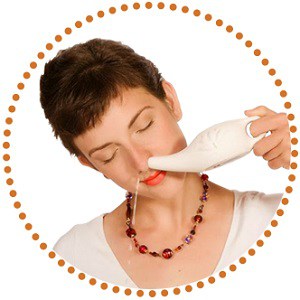
“Ayurvedic Solutions”
The nose and sinuses are designed to act as filters and they form the first line of defense against airborn contaminants, pollen, dust and other irritants. Nasal and sinus cleansing have been used for millennia to keep these “filters” working as they should. The neti pot essentially pours a salt water solution from one sinus cavity to those one the opposite side, cleansing in the process. Consider our new, modern version of the neti pot
Nutritional Advise
Food allergies can play a major role during childhood development and even throughout our adult lives. In children, food allergies are related before age 6. You can manipulate an infant’s diet and do well in helping their immune system. Eggs, orange juice, and milk have been implicated as suspect in children’s diet. Parents should consult with their physicians about trying the elimination diet. In general, such foods should only be eliminated. after testing them out, by first eliminating them and then re-introducing them back into the diet.
Such diets seem to work best in infants less than 2 years old. After age 6, it is believed by experts, that food plays a minimal role in most people. In adult life, we can acquire an allergy toward some particular foods, depending on our immunity to them. Difficulty digesting dairy (lactose intolerant) or allergic reactions to seafood (after so many years of not having a problem with it) are perfect examples.
Diet can greatly influence allergic responsiveness or lack of it, as can exposure to potentially irritating substances at critical times in one’s development. Excessive protein may irritate the immune system and keep it in a state of over reactivity. The protein in cow’s milk, specifically, is a frequent offender, and for people with a genetic predisposition to allergy it may be a hidden cause of problems. One general treatment strategy, therefore, is to follow a low-protein diet and try to eliminate milk and milk products.
Some studies indicate that people with sinusitis have environmental allergies. Although food allergies may also contribute to the problem, some researchers believe food allergies only rarely cause sinusitis. If other treatment approaches are unsuccessful, people with sinusitis may choose to work with a nutritionist in order to evaluate what, if any, effect elimination of food and other allergens might have on reducing their symptoms.
For adults, diet manipulation should be undergone by each individual. If you think there’s any food you eat that has an adverse effect on your body, avoid it and see what happens, If your problem clears up, you may have a food allergy.
Be sure to include these anti-inflammatory foods (if you are not allergic to them) in your diet such as:
– avocados
– tomatoes
– extra virgin olive oil
– ginger
– green leafy vegetables, such as spinach, kale, and collards
– nuts like almonds and walnuts
– fatty fish like salmon, mackerel, tuna, and sardines
– fruits such as strawberries, blueberries, cherries, and oranges
– omega fatty acids
– turmeric
Water should be a very important part of any nutritional program. 6-8 eight ounce glasses a day.
Supplementation with 500 mg of Pantothenic Acid a day helps most patients suffering from allergic rhinitis, a significant predisposing factor for sinusitis. However, research has yet to investigate the effects of pantothenic acid supplementation with people who have allergies.
Histamine is associated with increased nasal and sinus congestion. Vitamin C (2,000 mg three times per day) reduced histamine levels in people with either high histamine levels or low blood levels of Vitamin C.
Bromelain, an enzyme derived from pineapple, has been reported to relieve symptoms of acute sinusitis.
Eliminate milk and all milk products from the diet, including prepared foods that list milk as an ingredient. An overwhelming majority of patients report dramatic improvement in sinus and allergy conditions after two months of this dietary change.
Do not smoke. Do not spend time around smokers or in smoky environments.
Garlic rich in sulfur and antioxidants make it a great choice for reducing allergies and asthma symptoms by naturally boosting the immune system. Try one gram or a clove of garlic daily.
Are you ready to get well? Try Andrew’s Allergy Elimination Diet
Homeopathy
This medical system uses infinitesimal doses of natural substances to stimulate a person’s immune system and body’s natural defenses. Homeopathic remedies are named for the plant or animal ingredients they are made from. Homeopathy not only offers relief from temporary disorders but, can provide long term healing of a person due to its individual and “holistic” approach. This type of healing makes it easier and possible to avoid recurrence or relapses in the future and homeopathy stimulates the body’s natural defense system by reestablishing normal immune system and cell functioning.
Allergies:
Euphrasia 6c for symptoms of swollen eyes and watering, burning sensation. Also blanch discharge from the nose and symptoms worsen indoors.
Sabadilla 6c if symptoms occur such as violent sneezing, watery, swollen red eyes, sore throat that is soothed by warm drinks.
Allium Cepa 6c if symptoms occur such as watery eyes, nonirritating discharge, burning running nose, and frequent, sudden sneezing.
DIY Massage
Massage can be used to help relieve sinus pressure and tension around the head, neck, temples, forehead and sinus cavities.
You can massage the forehead in small circles moving upward into the hairline. Circle back down to the temples on the sides of the head, as well as the cheeks, and sinus cavities on both sides of the nose.
One simple massage would consist of placing the thumb and forefinger of either hand on the sides of the bridge of the nose. Squeeze the bridge of the nose for several seconds, and then release the pressure. Repeat this process ten to fifteen times inching your fingers down the sides of the nose and outward under the eyes. This will open the sinuses for proper drainage.
Massaging above and below the eyes will break up congestion as well. You can also massage the tension along the jawline. Cup on hand and latch the fingers along the SCM of the neck and pull the muscle toward the spine. Repeat on the other side.

The Full Spectrum Diet
As a Nationally Certified Herbalist and Licensed practitioner of Acupuncture and Chinese Medicine, Andrew Pacholyk, MS, L.Ac. has spent years developing a natural healthcare plan, which incorporates the benefits of fresh, full spectrum foods based on their color and their properties. A balance of attractive colors in the foods you eat, play an instinctual part as to what the body needs in the moment. The color energy of fruits, vegetables, vitamins and minerals all come into play when furnishing your body with the proper nourishment.
This easy to use system monitors healthy weight by the colors of food on your plate!
The Full Spectrum Diet is based on the proponents of color therapy and the holistic principles of eating mindfully, eating to nourish the body and seeing food in a more natural and spiritual way. Meals rich with different colored fruits, vegetables, meat, chicken, fish and whole grains means you are getting a healthy variety of nutrients that your body needs.
It is a simple way to eat healthy in order to achieve healthy results! Want to know more?
Traditional Chinese Medicine
Traditional Chinese Medicine (TCM) is the oldest, continually practiced, and professionally administered health care system in the world. It is a documented medical system spanning over 2,500 years based on comprehensive philosophies, rational theories, clinically tested and empirically verified by over 100 generations of highly educated practitioners.
Chinese Medicine is a total system of internal medicine, which is comprised of a diagnostic procedure based on signs, symptoms and treatment styles including acupuncture, herbal medicine, exercise, diet and meditation. It’s foundation is based on the principles of balance; the interdependent relationship of Yin and Yang. Through this balance, health is achieved and maintained.
Traditional Chinese medicine often views allergic rhinitis as related to Wind, noting that symptoms come and go rapidly, cause congestion, and make the person want to avoid windy situations. This Wind often coexists with a deficiency of the Protective or Wei Qi. The nearest we associate with Wei Qi in the West is resistance to colds and other respiratory infections. People with Wei Qi deficiency catch colds easily, and allergy symptoms may be particularly bad in the spring or fall seasons which are generally windy.
The acupuncturist also looks for constitutional or more deeply-rooted signs in each person who presents with allergic symptoms. The principle here is treating the whole person. Often people with chronic allergies show signs of Spleen or Kidney Deficiency as well as Lung signs according to TCM.
Acupuncture and herbal medicine are effective therapies for the treatment of allergies (especially if done BEFORE the season starts for you). Acupuncture redirects your Qi into a more balanced flow. It provides support to the underlying energetic spheres affected by your allergies, helping to resolve the cause or effects of allergies and allergic reactions. During pollen season, the intention of treatment is towards acute symptoms.. After pollen season has passed, or once symptoms have cleared, focus is on treating the underlying (root) problem by strengthening the immune system.
Herbal medicine is an important component for working at the root of the problem. These herbs are exceptional for sinus relief…
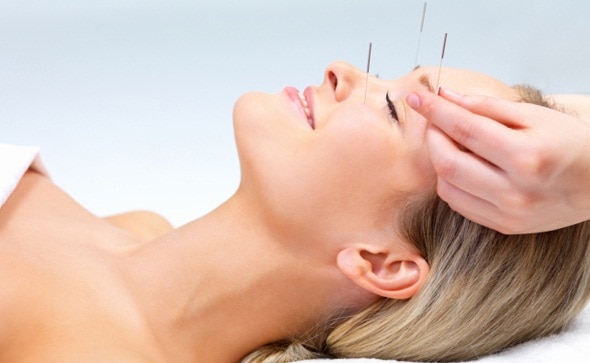
Acupressure for Allergies
Consider apply some acu-pressure on these areas for self relief:
Bitong: Located on each side of the nose, at the bottom edge of the nasal bones.
Yingxiang (LI 20): Located in the groove on each side of the nostrils, at the widest point of the nostrils.
Hegu (LI-4): Located at the highest spot of the muscle between the thumb and index finger on the back of the hand when the thumb and index finger are close together.
Gently start massaging these points S-l-o-w-l-y in a clockwise motions. As you get use to the light pressure, start going deeper, which will allow these main areas to release. Observe the power of these points about 15 minutes after you have massaged them.
Diet is another element that should be used as a remedy for allergies. Avoid foods, which produce phlegm, such as cheese, ice cream, milk, butter, and fried foods. Avoid foods which could trigger allergic reactions.
Visit Your TCM practitioner for a proper diagnosis and treatment.
Emotional Aspect:
There is an emotional aspect to every illness. Often times, it is the emotional thoughts or “excess emotions” that will lead to illness. The following therapies are utilized for calming the mind, help with stress relief and focuses on our mental powers over any situation. The ability to balance your emotional, mental, physical and spiritual self are exceptional tools on your healing journey. Here are some suggestions:
Although an allergy is a physical disorder sometimes reactions can be set off by an emotional or psychological response.
- People with allergies can develop reactions if they merely revisit a place where they once had a bad allergy attack.
- A “Conditioned Response” is as “real” as it would be if the allergen actually were really present.
There are other irritants around you and they are usually close by: Stress from a relationship with a loved one or family member can set off your allergies.
-
- Speak your peace. Express what is on your mind. If not verbally, write it out!

Yoga Diaphragm Breath
The Yogic breath exercise can be done anywhere, without danger, and with a good chance that your discomfort and stressful feelings will be reduced. Relaxation Breath is the most powerful tool for stress management, clearing your lungs and expanding your power. Use this for relieving congestion, emotional blockage, stress or tension…
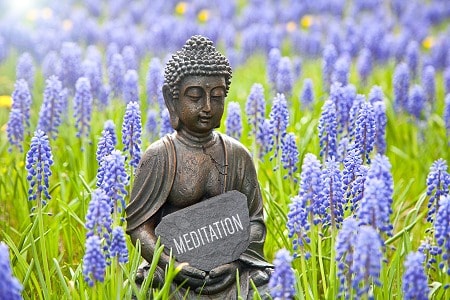
Meditation Release
Meditation will calm an agitated mind, creating optimal physical and mental health, undo our sense of separateness, which is the common root of fear and misery, unify consciousness, putting us in touch with our higher self and connect us to higher consciousness. Meditation restructures the mind, allowing us to achieve our full potential as human beings.

Color and Allergies
Color interacts with the human energy system in a unique way to stabilize physical, emotional, mental and spiritual conditions. Orange – gives energy to the bronchia, chest discomfort, disturbances in the spleen, kidneys, stomach, gall stones. It increase the intake of oxygen, helps lungs, releases flatulence from the stomach.
Hypnotherapy
Allergies have multiple roots. One is inherited, since these conditions are more frequent in children of parents with allergic histories. Another is in the mind and nervous system. Emotional Stress can trigger allergic reactions, and relaxation techniques can moderate them. A person who is strongly allergic to daisies may react to the sight of a plastic daisy, demonstrating the involvement of mind over body in the learned aspect of these inappropriate immune responses.
Allergies cross-over the mind/body border. There is no question about its physical reality, since you can die from an allergic reaction, but you can also make it vanish by changing your mental and emotional state. It is a fact that severe cases disappear when people switched jobs, left a spouse, or eliminated sources of stress. One way to take advantage of the mind/body connection in search of allergy relief, is to experiment with hypnotherapy. Hypnosis can lessen or completely prevent allergic reactions and can facilitate the immune system’s unlearning of its pointless habits. Contact Andrew for a local Hypnotherapist.
The Metaphysical Connection to the Nose
Our nose represent our own self recognition. Therefore, a symbol of intuitive discernment, taking in and sniffing out the truth.
Our sense of smell is the most direct path to our emotions. What are you not recognizing? Is it your self worth (congested), not being recognized (bleeding), or runny (asking for help or crying)?
Once the Olfactory receptors identify an aroma > nerve cells relay this information directly to the Limbic system of the brain.
Here, aromas can trigger memories and influence behavior.
Additionally, the Limbic system works in conjunction with the pituitary gland and the > Hypothalamus region of the brain to regulate the hormonal activities > thus triggering the production of hormones that govern >
- appetite, body temperature, insulin production, overall metabolism, stress levels , sex drive , and conscious thought and reactions. > The Limbic system also influences immunity.
Metaphysical Thoughts
-
- Learn to breathe deeply and fully. Your breath is your connection to relaxation and inner peace.
- Metaphysical expert Louise Hay agrees:“Allergies relate to the fact that we deny our own power!”
- Who are you allergic to? Consider emotional congestion, belief in self-persecution or guilt are other issues that should be addressed.
* Our Belief System is one of the major factors that can get us through situations or can cause our life to crumble around us! I do believe that there is a lot of innate goodness and balancing our minds do subconsciously to get us through hard times. The other portion of this is how we “program” ourselves to deal with any given situation.
* Our self-confidence and self-love are often the key to opening and strengthening this portion of our thoughts which in turn emanates from ourselves!
* Energy follows thought. Program thought to be positive and your energy will reflect it!
* Really appreciating what we DO have as opposed to what we would like to have, sometimes makes a significant difference. This is always an important element in healing that is often neglected.

Study Energy Medicine at Home
The Peacefulmind.com Homestudy Courses make it possible for anyone to study energy medicine at home, on your time! These certifications programs are offered by the National Association of Holistic Wellness
*Transitions: The Transformational Guide and Workbook for Creating Great Health This is the culmination of years of Andrew Pacholyk, MS, L.Ac. clinical work. This is a manual you can use, whether you are healthy or ill or somewhere in between and you want to re-balance your mind, body and spirit to become the whole person you can be! This workbook gives you a plan to take care of yourself. It can be used over and over to find balance and keep yourself as healthy as possible. It gives you “tools” to use when and where you need them. It helps to evaluate where you are in your journey and offers ways to get you exactly where you want to be! Want to know more?
*The “Color Elite” Color Therapy Certification Course Andrew Pacholyk, MS, L.Ac. has finally published his most complete healing course using the power of color and light therapy. This ultimate guide to chromotherapy teaches you about color and every aspect of it, how it is used in different therapeutic settings and how it has become such a great healing modality, no matter what profession you are in you will learn how to incorporate color into your daily life! Want to know more?
*The Crystal Light Crystal Therapy Course This incredible course is our biggest and most popular course on the internet! This is the study of crystals and how to heal with earth’s precious gems! Want to know more?
*Chakracology – A Workbook and Manual This workbook format allows you to look at the energy of the Chakra and how they affect us on a daily basis. The book allows you to work through each center on a mental, spiritual, as well as a physical level and then find ways to re-align, balance and manage your energy in a positive way! Want to know more?
*The Healing Art of Touch – Massage Therapy Homestudy Learn the art of touch and massage therapy through Andrew’s very extensive course. Complete anatomy lessons, varied techniques and amazing information is offered in this course. Also learn the business aspects of massage, how to cope with clients that are difficult and energy transference are just a few of the many topics covered! Want to know more?
*What’s Your Heart Telling You? Finding Love and Romance – The Workbook and Journal Andrew Pacholyk, MS, L.Ac. has now published his newest work based on years of personal intimacy, clinical experience, counseling and client research on the ways to navigate love, sex, romance and relationships in a modern day world. Andrew has devised this very thorough workbook and journal with questionnaires, exercises, quotes, tips, meditations, feng shui, aromatherapy, massage and herbal applications for creating the perfect scenario for finding, coping and keeping love in your life! Want to know more?
*The Feng Shui Journal The Peacefulmind.com Feng Shui Journal makes it possible for you to improve relationships, maximize career potential and enhance your environment! * We are honored to offer the Feng Shui Journal for beginner to advanced Feng Shui practitioners. This journal covers an extensive background on Feng Shui techniques history, usage, clearing, cleansing, manifesting and helpful information in order to bring balance back into your life! Want to know more?
What are your experiences with allergies?
Sharing your own experiences often helps others. We’d love to know in the Peacefulmind Community.
